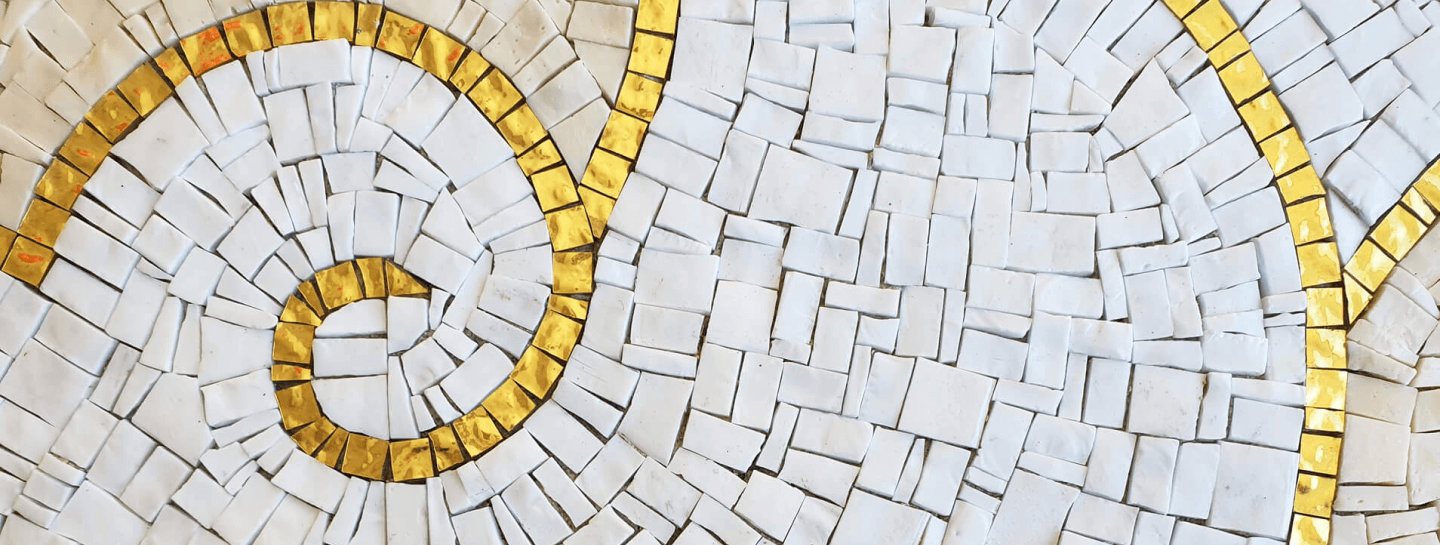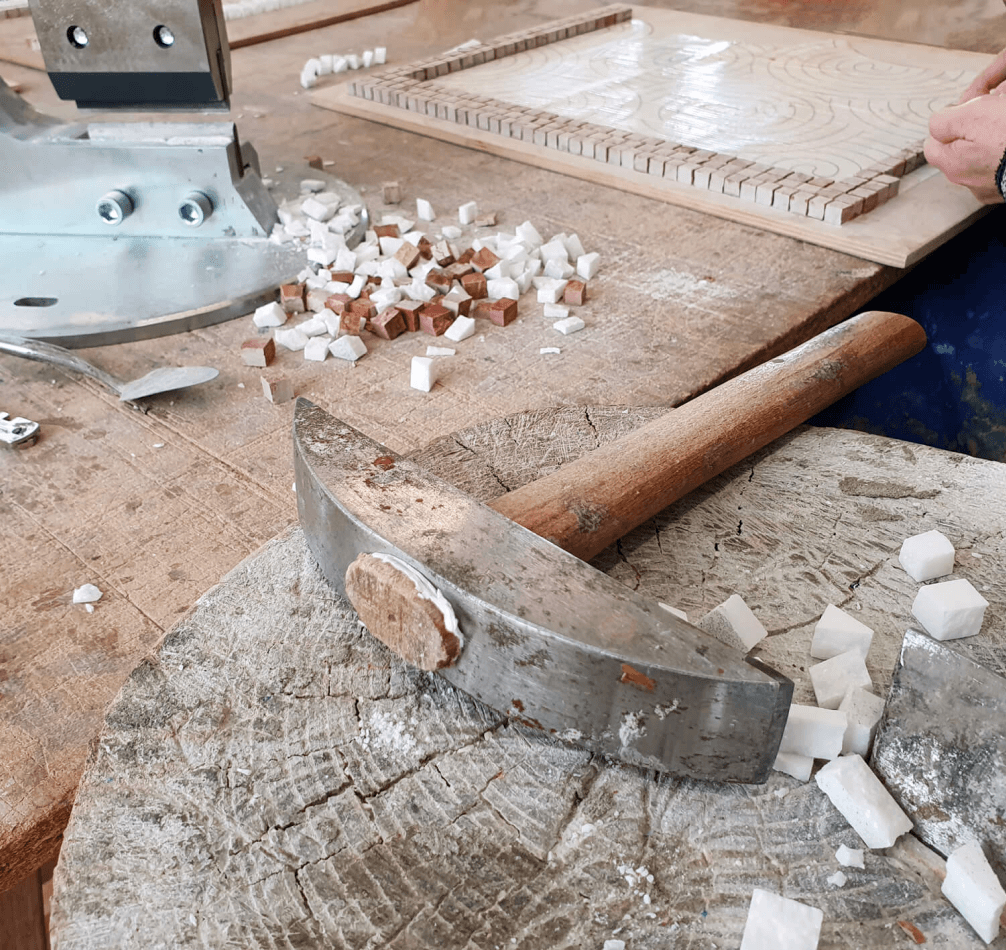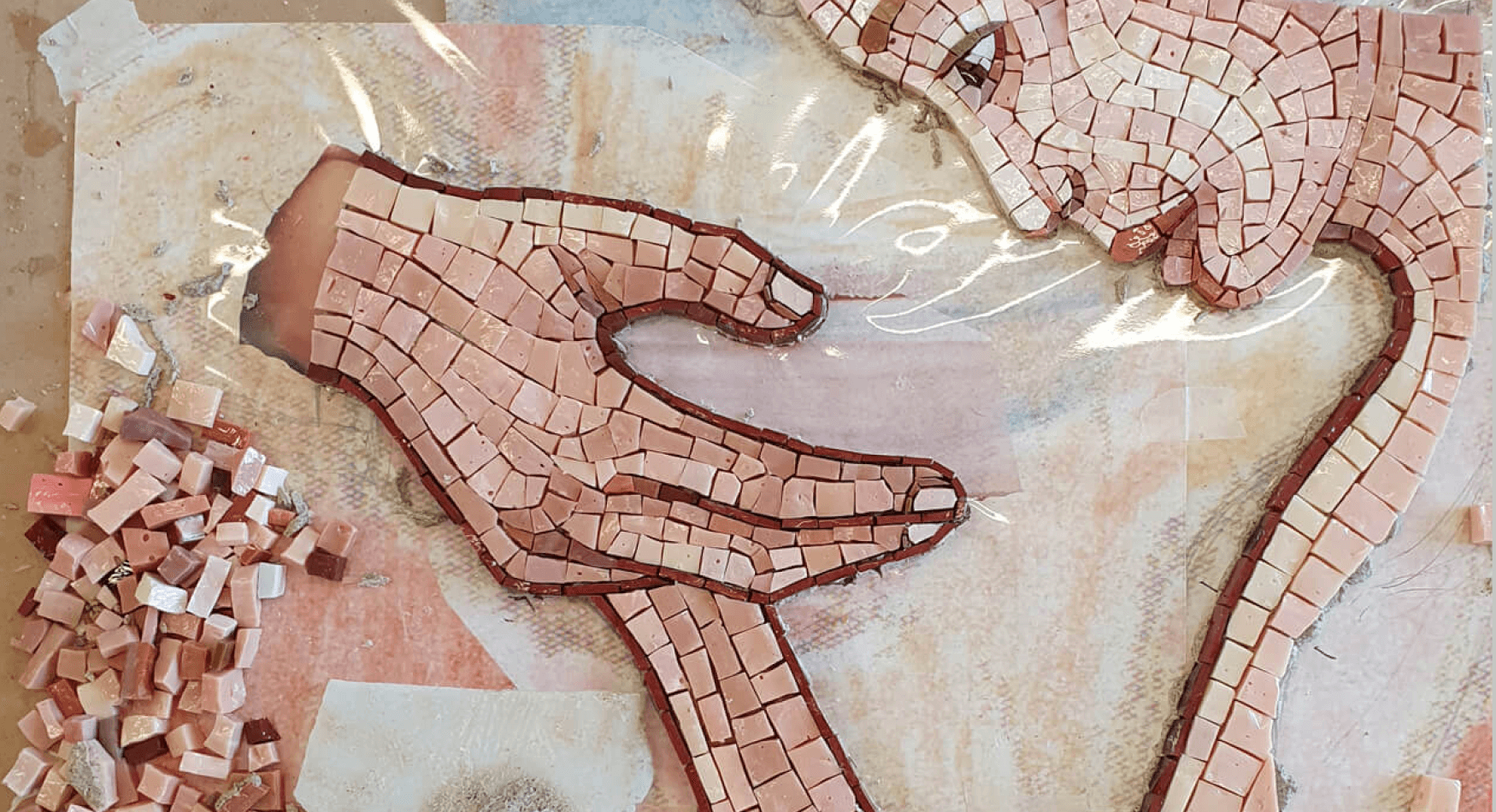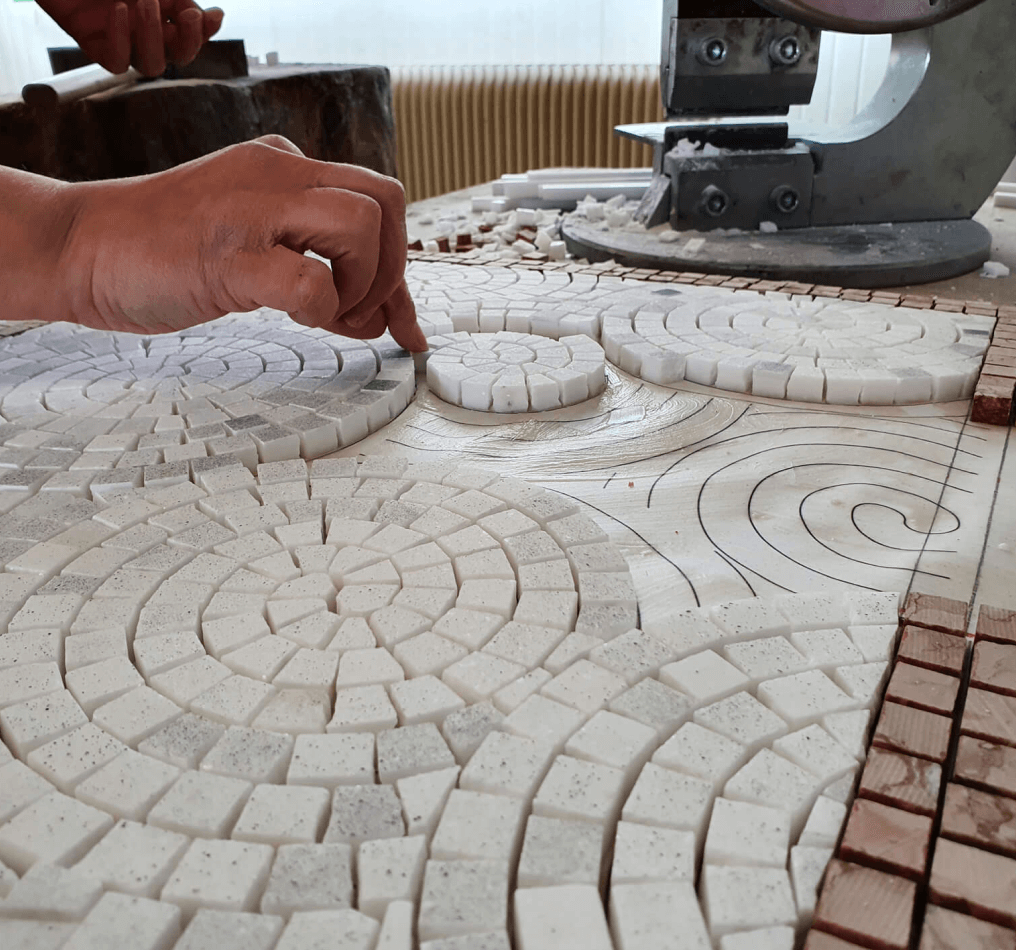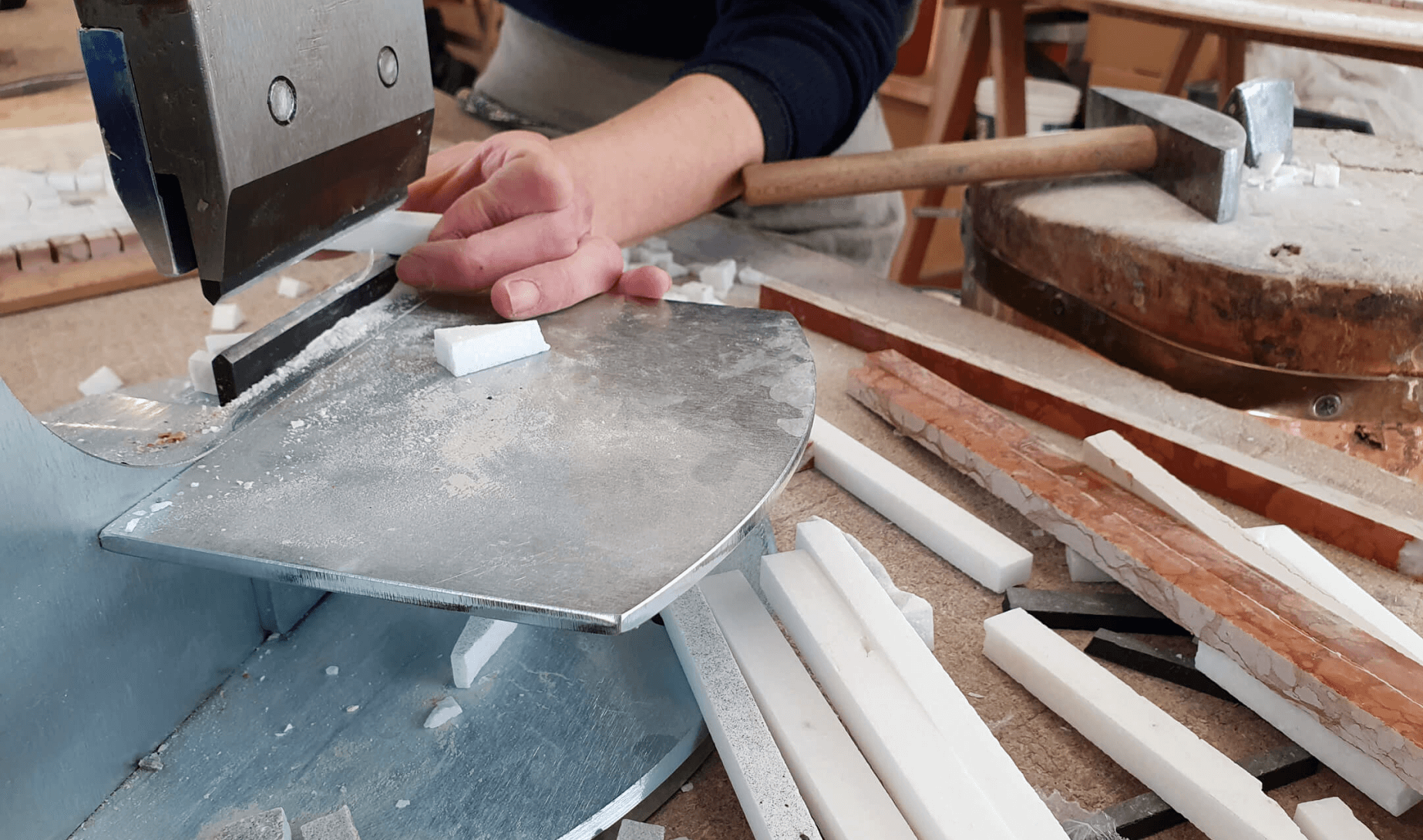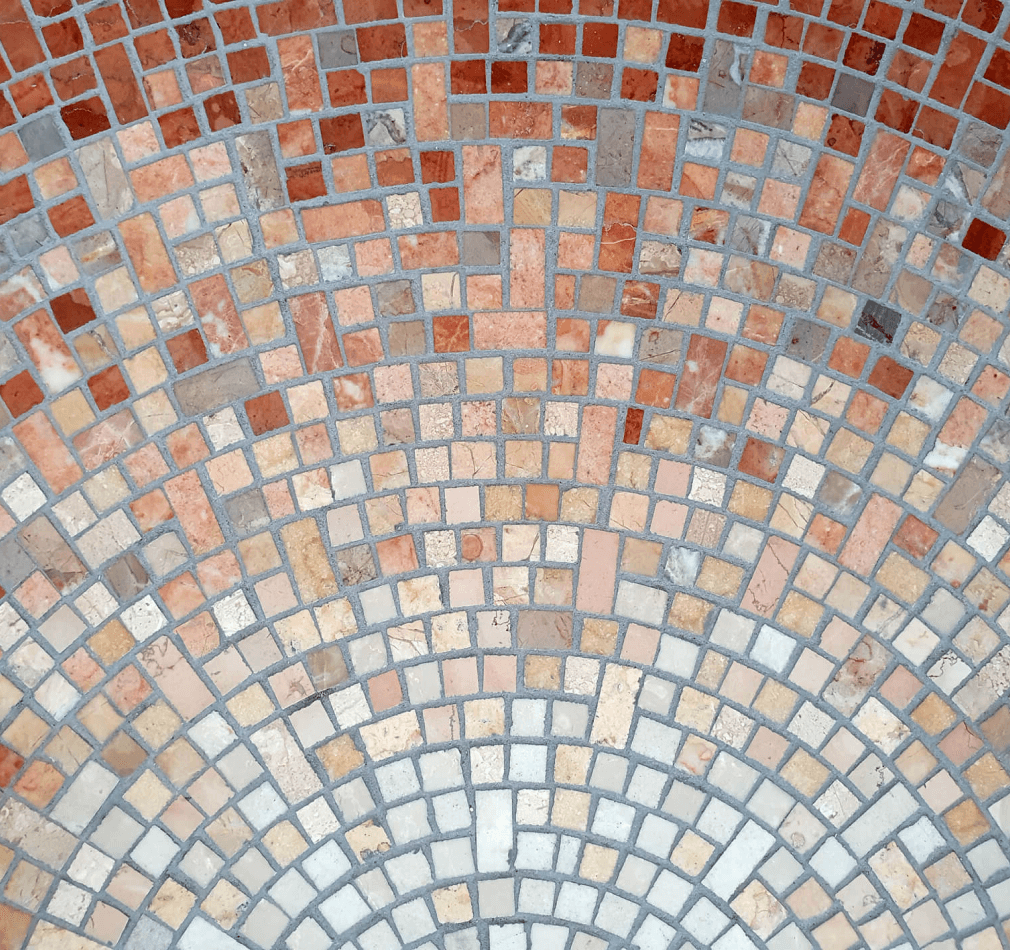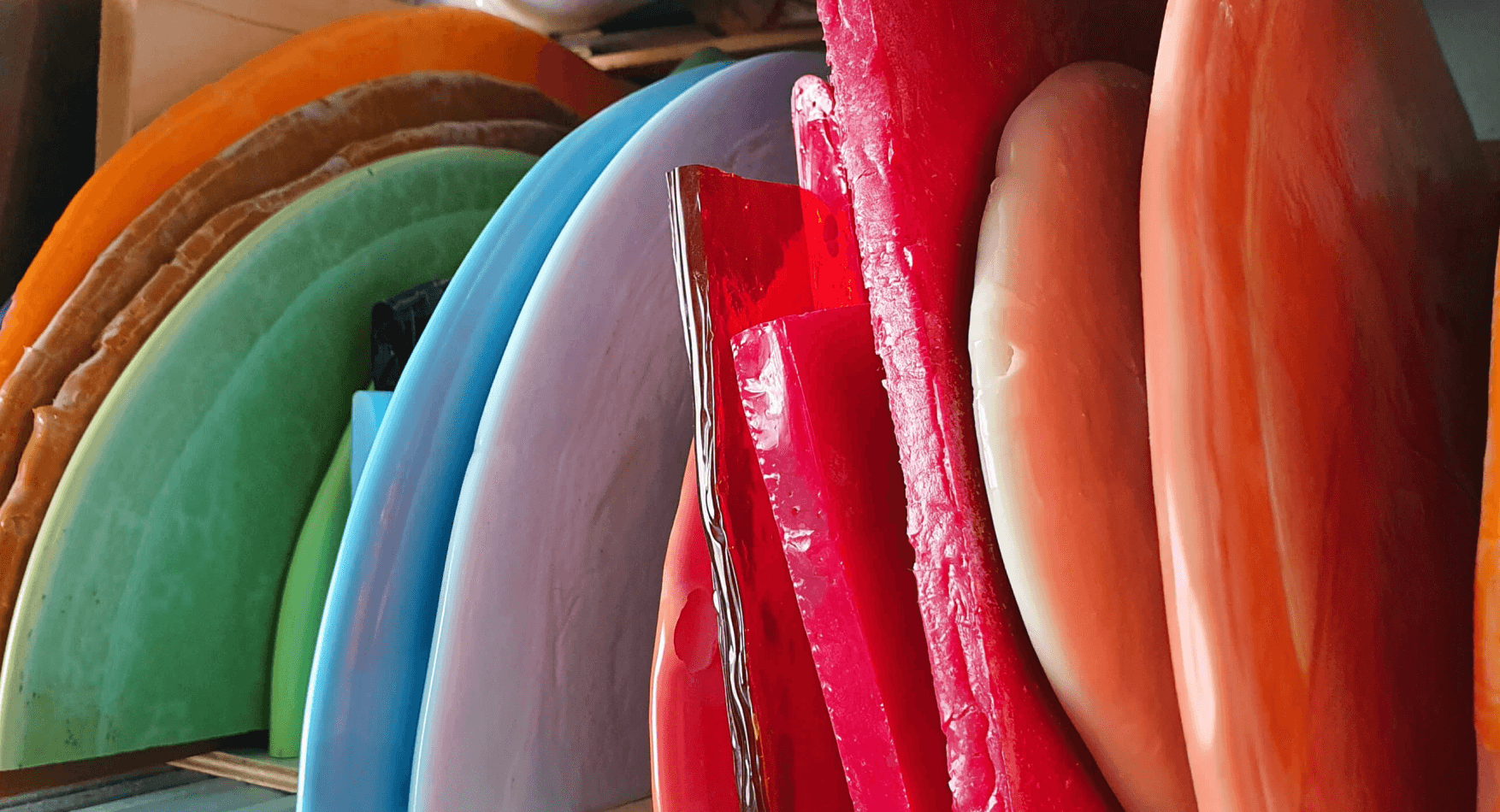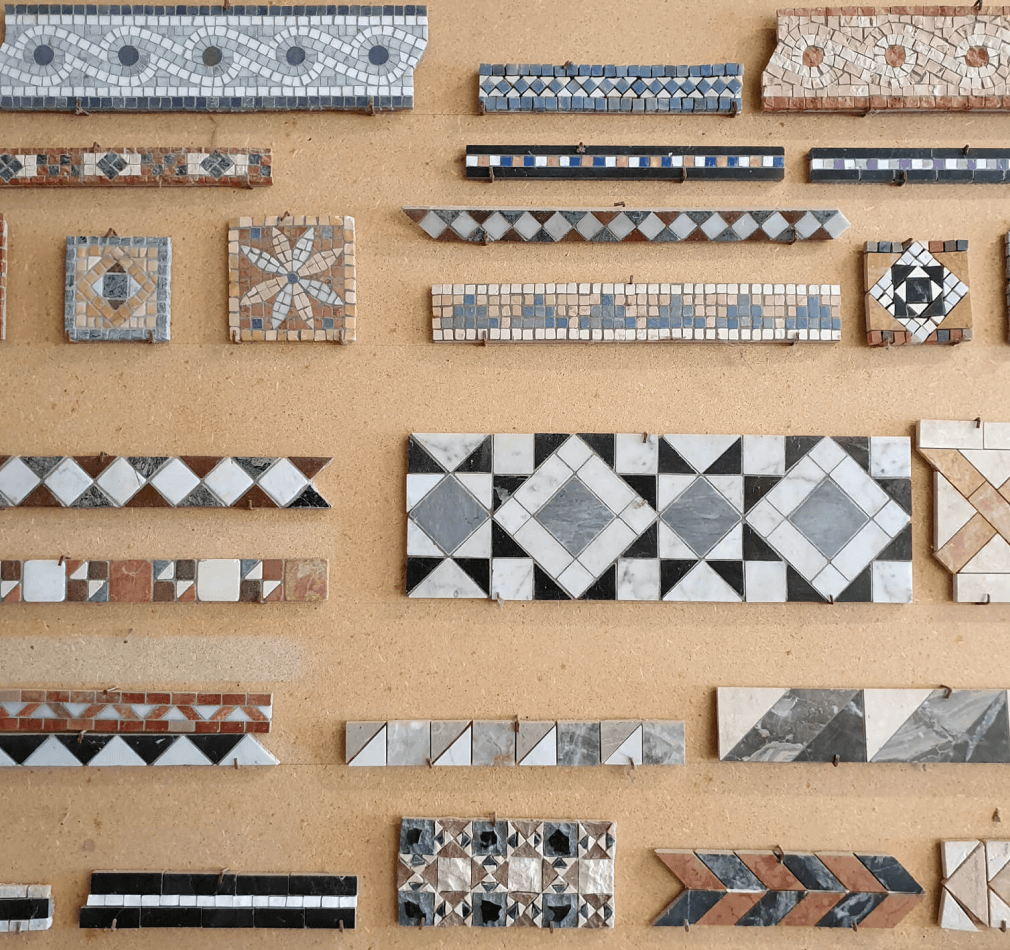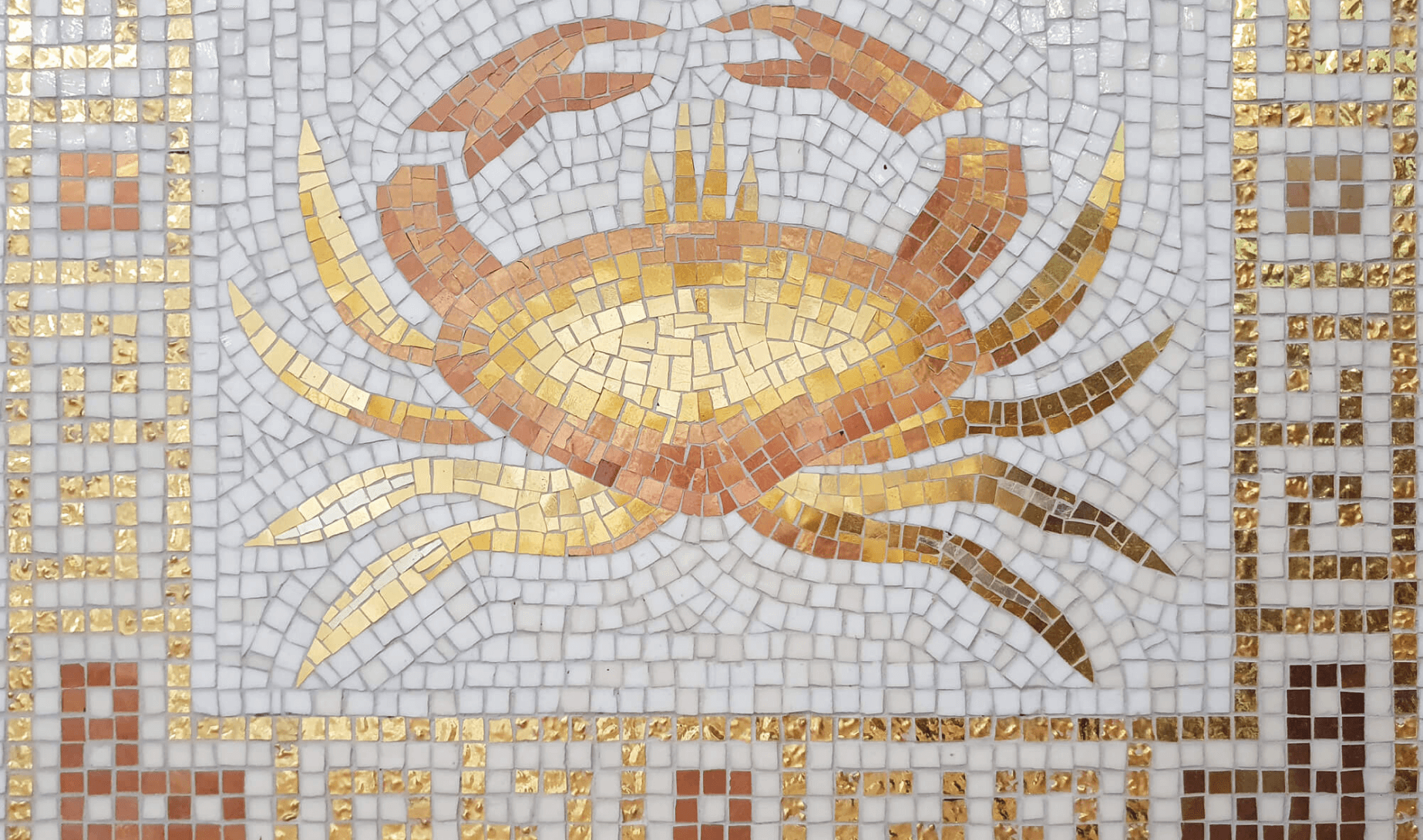Mosaic is an art that is created thanks to the great skill of master craftsmen who are able to imagine, design and create figurative and non-figurative images on different types of surfaces and supports, making them vibrant and animated. Mosaics are traditionally applied as floor and wall coverings and as a decorative element of furniture, accessories and furnishings; it can also be used as a technique to recreate works of art made in other techniques such as paintings, watercolours and photographs, giving them a new and unusual life.
Nowadays, however, there is a tendency to overcome the categorisation of mosaic according to types of application in favour of a “global” approach to mosaic design. Mosaics offer the possibility of creating customised projects of great visual and emotional impact, overcoming structural barriers and involving the environment and the objects that inhabit it. Mosaic design projects thus break through the boundaries of surfaces to involve spaces in a single large decorative programme that envelops visitors and embellishes environments in a unique way.
